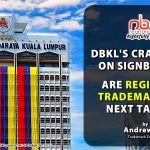According to the World Intellectual Property Organization (WIPO) studies, cybersquatting began as early as 1998 whereby individuals or even business owners with bad intention took advantage of brand or trademark owners by registering their brands or trade names as domain names. This has caused trademark owners huge problem when trying to secure a domain name to promote their brand names within the virtual world. Trademark owners have no other choice but resorting to purchase the respective domain names from the respective ‘cybersquatters’ as being a registered trademark owner does not give them an absolute power to enforce their rights against these so called ‘cybersquatters’ bearing in mind trademarks and domain names are two different things.
The majority of the Trademark laws around the globe, including Malaysia, are silent in relation to the trademark being enforceable against domain name registration. Unless of course trademark owners are able to prove the use of the domain names is, in fact, an act of passing off. This would be a separate topic to discuss and not the main purpose of this article.
WIPO has recently released its Third Edition of the Overview of WIPO Panel Views on Selected UDRP Questions to address cross border trademark-abusive domain name registration. This overview talks about the implementation of the UDRP which stands for ‘Uniform Domain Name Dispute Resolution Policy’. This policy existed back in the year 2000 where its first decision construed one of the Policy’s paragraph as requiring the complainant (trademark owner) to prove respondent (cyber squatter) both registered the domain name in bad faith and used in bad faith. However, this particular Policy also plays a balancing of right role whereby it also protects genuine domain name holders by also taking into consideration whether there exists an actual risk of confusion between the registered trademark and registered domain names.
The UDRP is a complicated Policy which is still under discussion and polishing. Moving back to reality, what should trademark owners in Malaysia do when their trademark has been maliciously registered as domain names by cybersquatters? In Malaysia, MYNIC Berhad (aka Malaysia Network Information Centre) governs the registration and use of a ‘.my’ domain names whereby all Proceedings are governed and administered in accordance with the MYDRP (Mynic Domain Name Dispute Resolution Policy).
So how does it work? A Complaint may file with the respective provider and in accordance with Paragraph 5.2 of the Policy, The Complainant must establish BOTH of the following elements in the Complaint:-
- The Domain Name is identical or confusingly similar to a trade mark or service mark to which the Complainant has rights; and
- Registration and/or use of the Domain Name in bad faith.
The above clearly implemented the policy provided within the UDRP by WIPO. In addition, MYDRP further provides guidelines for trademark owners in relation to how to prove bad faith. Paragraph 6.1 states that evidence of your registration and/or use of the Domain Name being in bad faith may include, among others, the following circumstances:-
- Registration and/or use of the Domain Name mainly to sell, rent or transfer the Domain Name for profit to the Complainant, its competitor or the owner of the trade mark or service mark; or
- Registration and/or use of the Domain Name to prevent the owner of a trade mark or service mark from using the domain name which is identical with its trade mark or service mark; or
- Registration and/or use of the Domain Name to disrupt the business of the Complainant; or
- Registration and/or use of the Domain Name for the purposes of and with the intention to attract or divert, for commercial gain, Internet users to:-
- Your web site;
- A web site of the Complainant’s competitor; or
- Any other web site and/or online location, by creating a possibility of confusion or deception that the web site and/or online location is operated or authorized by, or otherwise connected with the Complainant and/or its trade mark or service mark.
From the above, we could see that despite there is still a limit to what a registered trademark can do on its own to stop cybersquatting, but combining with the provided policy available here in Malaysia and WIPO, a registered trademark is still a useful arsenal to stop cybersquatters.
If you need to know more about the trademark registration process or questions,
Please Contact Us: 03-58914846
Or Email Us: [email protected]
Website: www.nbs.com.my
©ANTHONY THAY OF NBS INTELLECTUAL SDN. BHD.
ALL RIGHTS RESERVED







Comments are closed.